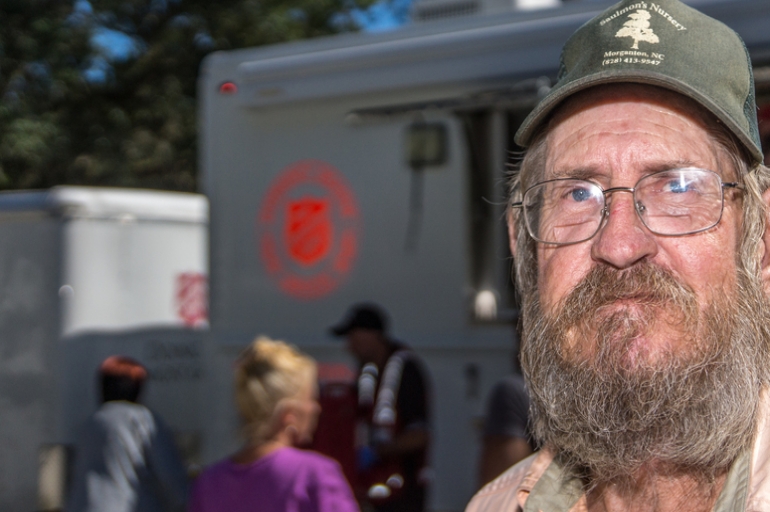Why Does The Salvation Army Provide Food and Water in a Disaster?
Shelley Henderson | shelley.henderson@uss.salvationarmy.org | (704) 621-6106

Charlotte, N.C. (October 13, 2016)— Every day across the world, The Salvation Army is feeding people, meeting one of their most basic needs. That need changes and expands before, during, and after a disaster. When a disaster happens, The Salvation Army is there to deliver food and drinks to people. Why is food and water support so important in a disaster? Who does The Salvation Army serve?
WE FEED BEFORE A DISASTER
Before a disaster, first responders gather in Emergency Operation Centers (EOC) to coordinate response or in staging areas to mobilize in communities. Even before Hurricane Matthew impacted the Carolinas, The Salvation Army was serving hot meals and cold drinks in EOCs across both states so emergency management officials could continue their important work.
The Salvation Army also serves food to displaced residents compelled to seek shelter before a disaster because they live in vulnerable areas. Through close coordination with local government and disaster service agencies, The Salvation Army is there to meet the immediate needs of evacuees.
WE FEED AFTER THE DISASTER
After the disaster, The Salvation is in the community as soon as the roads are clear to provide the physical comfort of a hot meal and a cool drink and the emotional and spiritual comfort that our specially trained care givers provide. During the Hurricane Matthew many people lost power; no electricity means that refrigerated food is spoiled and unusable. No power means that people do not have a way to cook their food. The Salvation Army is there in the community to provide meals to families and individuals so their resources can go toward restoring and rebuilding their lives.
The Salvation Army's response has just begun. In the days and weeks ahead we will be out in the community, feeding people's bellies and souls. We can do this because you support us. Thank you from The Salvation Army and on behalf of the people we are serving in the Carolinas.
You can help by your financial gifts to support Salvation Army disaster relief efforts. 100% of donations go directly to the disaster.
How People Can Help
The best way to help after a disaster is to make a financial donation to the charity of your choice. Monetary contributions also support local economies and ensure that businesses can operate when relief supplies diminish.
- Donate Online: http://give.salvationarmyusa.org/hurricane_matthew
- Donate By Mail: The Salvation Army PO BOX 1959 Atlanta, GA 30301. Please designate ‘Hurricane Matthew’ on all checks
- Donate By Phone: 1-800-SAL-ARMY (1-800-725-2769)
- Donate By Text: Text STORM to 51555 to receive a donation link for easy mobile giving
The Salvation Army annually helps more than 30 million Americans overcome poverty, addiction, and economic hardships through a range of social services. By providing food for the hungry, emergency relief for disaster survivors, rehabilitation for those suffering from drug and alcohol abuse, and clothing and shelter for people in need, The Salvation Army is doing the most good at 7,600 centers of operation around the country. In the first-ever listing of “America’s Favorite Charities” by The Chronicle of Philanthropy, The Salvation Army ranked as the country’s largest privately funded, direct-service nonprofit. For more information, visit www.SalvationArmyUSA.org. Follow us on Twitter @SalvationArmyUS and #DoingTheMostGood.